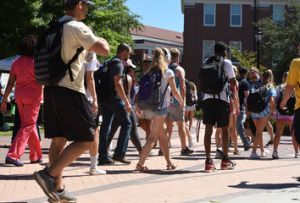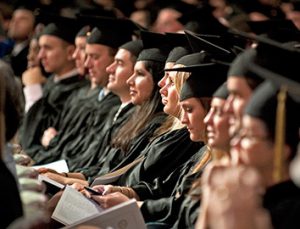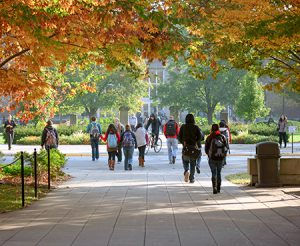
Foreign enrollment at US colleges holds steady overall
Some universities are seeing backslides that have punched big holes in tuition revenue, but overall the falloff is less severe than some industry groups had forecast.

Some universities are seeing backslides that have punched big holes in tuition revenue, but overall the falloff is less severe than some industry groups had forecast.
the National Student Clearinghouse Research Center report suggests that steep drops seen after the pandemic disrupted colleges globally in early 2020 have not been reversed.

In the last five years, the state’s public higher education institutions have seen a 12.1% dip in undergraduates, equal to 27,000 fewer students.
Enrollment trends will drive crucial upcoming decisions on the future of the district, such as considering potential school closures, evaluating choice programs, and adding charter school partnerships.
Enrollment in Indiana University’s online courses has soared during the past decade across the school’s campuses even as overall student enrollment has dropped, officials said.
Purdue officials say that evolving student interests and changes in the world of agriculture have driven continued and growing interest in the college's range of programs.
A burgeoning freshman class has helped lift Purdue University to an all-time high in enrollment on its main campus.

The college will aim to attract students by offering small class sizes and the opportunity to work part-time while attending school at employers who are working in partnership with Marian.
Much of this year's decrease stems from a nearly 11 percent decline in freshman enrollment.
Parent organization Dream Center Education Holdings said it has been “undergoing an ongoing process of evaluating the viability of certain campus-based programs.”
Indianapolis Mayor Joe Hogsett on Tuesday plan to roll out an initiative called Indy Achieves, which will support students across Indianapolis’ 11 school districts.
The major change this year is to replace the existing State Workforce Innovation Council with a new board that legislative leaders hope will be smaller and more nimble.
In his State of the State address, the governor offered specific targets for returning college dropouts to school, helping inmates earn work certificates and pushing more companies to offer training programs.
Faced with a shortage of skilled workers to fill some available jobs, legislators have proposed myriad bills this session aimed at tackling the issue and improving the effectiveness of the state’s system.
Purdue University is rolling out a grant program to help lower- and middle-class Indiana students afford college.

As enrollment swells, the south-side university is working with a local developer to construct two four-story buildings with capacity for 300 students.
Indiana officials are also trying to advance “reverse transfer” policies statewide as a tool to increase Indiana’s college attainment rate.
Officials want to boost Indiana’s college attainment rate from 41 percent to 60 percent by 2025 and think targeting people who have shown an interest in school but never finished may be the fastest way to get there.

President Mitch Daniels said he didn’t think the school could keep tuition costs down as long as it has and he’s disappointed other colleges haven’t followed suit.
Observers say the deal is unprecedented for a public research university and leaves unanswered questions about how others in the sector will respond.